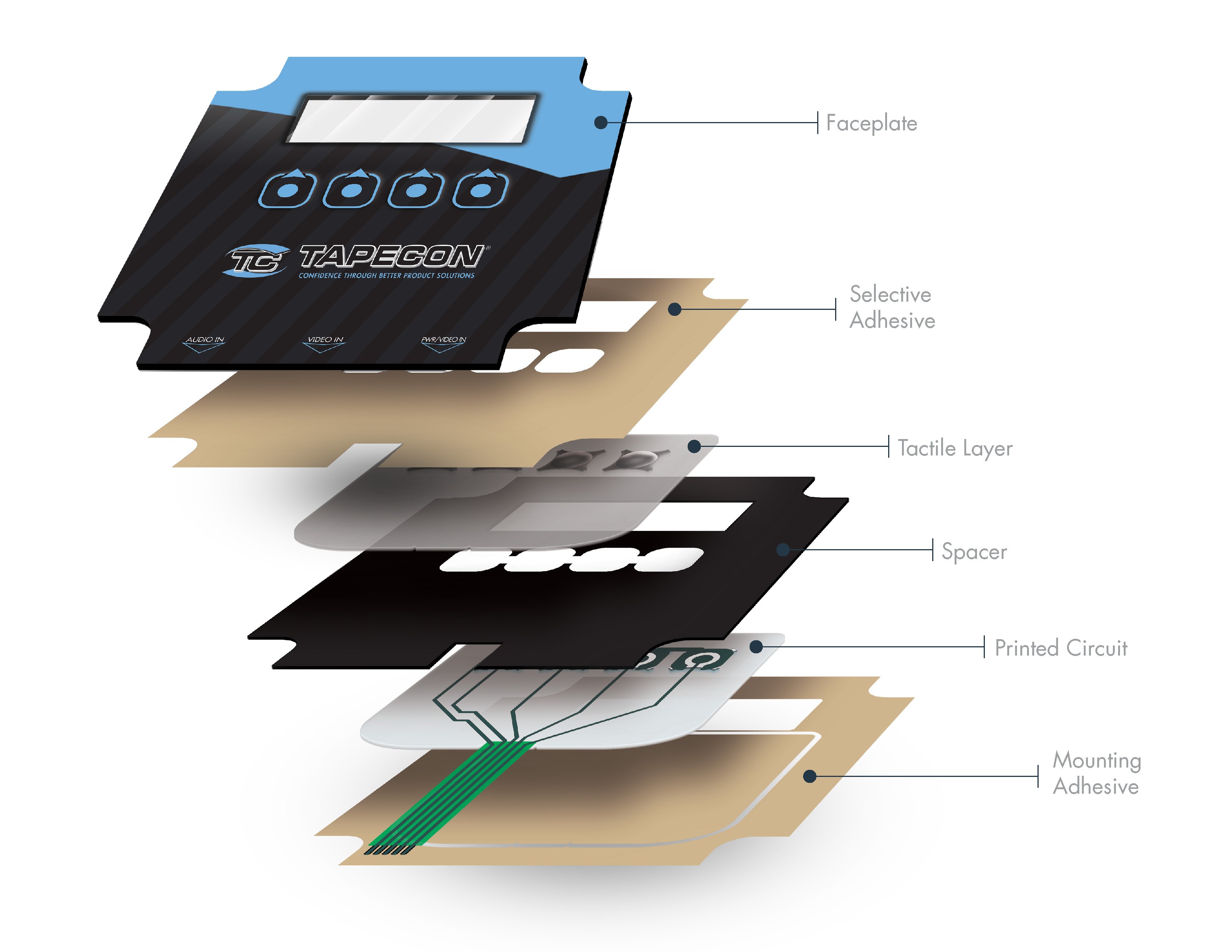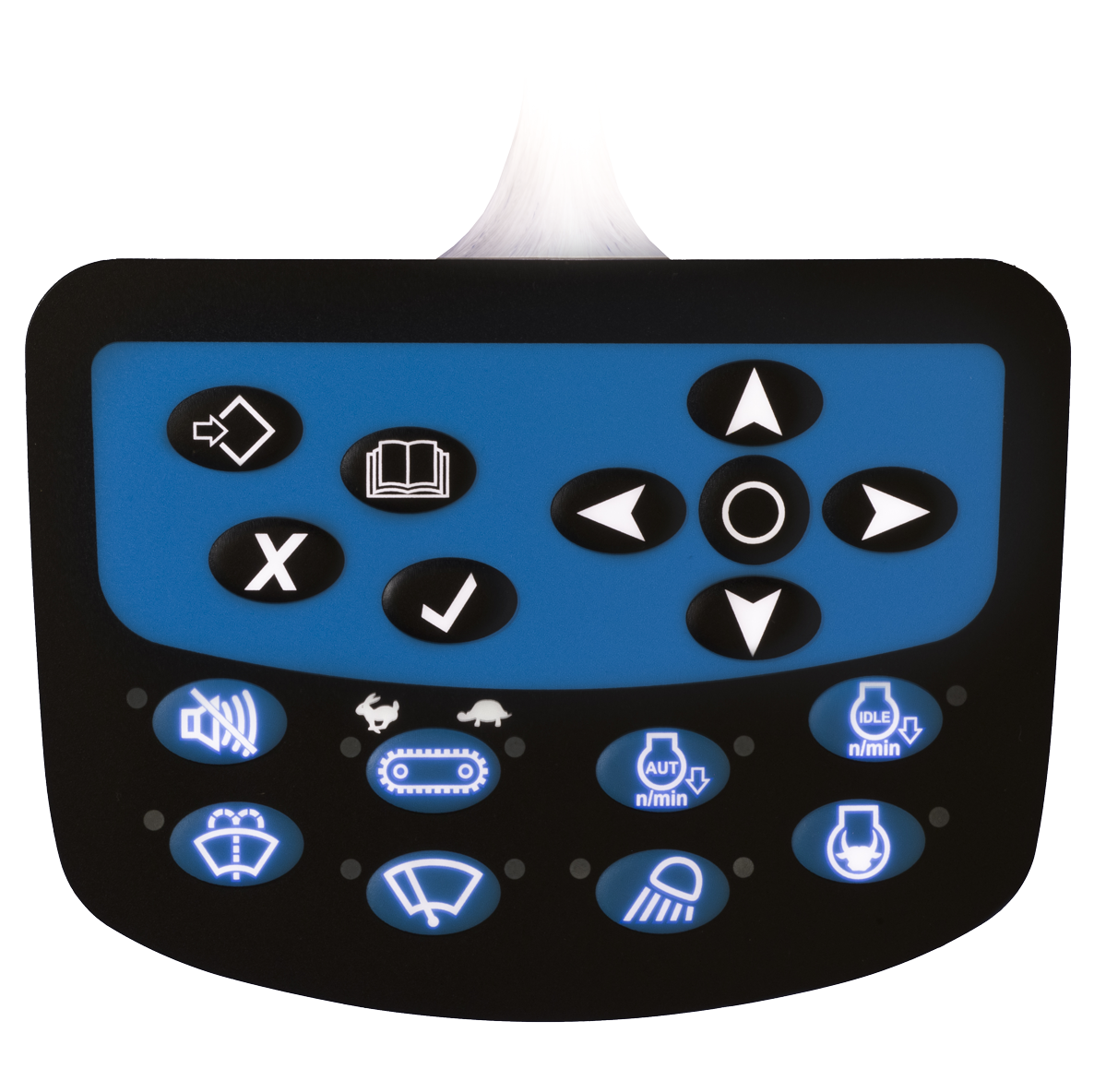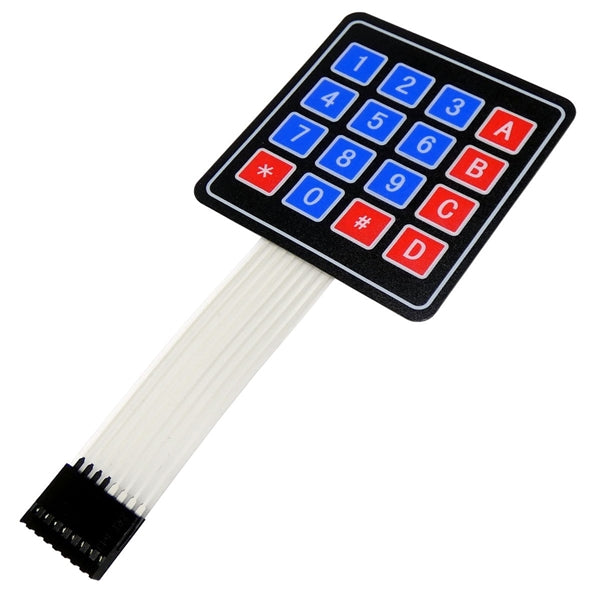The Benefits of Membrane Switches Over Conventional Switches in Tough Settings
Why Membrane Layer Changes Are Essential for Resilient Control Systems
Membrane layer switches play a critical role in making sure the durability and reliability of control systems across various industries. Their unique building permits them to sustain difficult ecological aspects such as moisture, temperature level extremes, and physical wear. This strength not only expands the lifespan of the systems they offer but likewise lessens maintenance requirements. As we check out the complex advantages of membrane buttons, it becomes obvious that their importance transcends plain performance, influencing individual experience and operational performance. What more effects do these attributes hold for the future of control system design?
Review of Membrane Switches
Membrane buttons are flexible and trusted parts typically made use of in numerous electronic control systems. The graphic overlay offers both useful and visual style, while the spacer layer makes sure that the buttons are turned on only when pushed.
Membrane layer buttons are often favored in applications needing a small and lightweight style, making them perfect for portable devices, clinical equipment, and commercial machinery. They can be tailored to meet specific customer requirements and can integrate various features such as backlighting, responsive feedback, and numerous colors. Membrane buttons are immune to dust, moisture, and pollutants, making them suitable for environments where sturdiness is important.
Benefits of Toughness
In numerous applications, the longevity of membrane layer changes deals substantial benefits that improve their total efficiency and dependability. These buttons are created to withstand severe environments, making them suitable for usage in requiring conditions such as high moisture, extreme temperatures, and exposure to chemicals. Their robust building and construction helps to stop damages from physical influence, making sure lasting functionality and reducing the need for constant replacements.
Additionally, membrane layer switches are resistant to deterioration, which is crucial in applications where regular interaction takes place. This durability equates to reduce maintenance costs, as organizations gain from lowered downtime and less service disturbances. Additionally, the encapsulated design of membrane layer switches over protects inner parts from dust and dampness access, further contributing to their life-span.
One more advantage is their capacity to keep regular efficiency over time. With a high resistance for mechanical tension, these buttons protect their responsive responses and electrical stability, making sure individual fulfillment. Inevitably, the sturdiness of membrane changes not just boosts functional performance yet also promotes self-confidence in their reliability, making them a preferred selection for control systems across numerous fields.
Applications in Numerous Industries
Sturdy control systems using membrane layer switches find considerable applications across an array of industries, each benefiting from the one-of-a-kind features these switches offer. In the medical market, membrane switches are essential for tools such as person displays and analysis equipment, where dependability and ease of cleansing are critical. Their resistance to moisture and contaminants guarantees they maintain performance in clean and sterile atmospheres.
The automobile industry leverages membrane layer buttons for dashboard controls and infomercial systems, redirected here where they offer sleek, inconspicuous user interfaces that enhance customer experience. These switches are also created to withstand extreme problems, including direct exposure to extreme temperature levels and resonances.
In industrial settings, membrane switches are commonly utilized in equipment control board, supplying tactile feedback and durability needed for high-usage applications. Their capacity to withstand chemicals makes them ideal for making atmospheres where spills and impurities are frequent.

Customer electronics, such as kitchen devices and push-button controls, also utilize membrane layer switches for their adaptability and cost-effectiveness. In general, the adaptability and durable nature of membrane changes make them crucial across different sectors, ensuring reliable operation and longevity in control systems.
Layout and Visual Charm
While functionality is paramount, the layout and visual charm of control systems furnished with membrane layer buttons play a critical role in customer engagement and total experience (membrane switch). The aesthetic design of these switches can significantly influence customer perception and communication. A properly designed membrane button boosts the attractiveness of the device, making it much more attractive to individuals and fostering a link between the individual and the item
Membrane layer changes supply a large amount of versatility in style, permitting manufacturers to personalize graphics, colors, and textures to align with brand name identification and item looks. The usage of dynamic shades and unique patterns can draw interest, while responsive feedback can enhance the user's communication with the tool. Furthermore, the ability to incorporate LED indicators and backlighting right into the membrane button layout provides both practical and visual benefits, improving presence and usability in numerous environments.

Enhancing Customer Experience

Additionally, membrane switches can be personalized to include graphical interfaces, enhancing usability by presenting information in a clear and user-friendly way (membrane switch). This personalization can consist of symbols, labels, and shade coding that guide individuals via complicated capabilities easily. Additionally, their adaptability enables assimilation in numerous settings, guaranteeing constant performance whether in commercial machinery or customer electronics
The toughness of membrane buttons also plays an essential duty in customer experience. By withstanding rough conditions and prolonged usage, these switches reduce the chance of system failings, hence promoting reliability and individual self-confidence. Ultimately, the critical use of membrane switches over not just elevates functionality yet additionally significantly right here enhances individual interaction with control systems, making them an indispensable component in modern-day design.
Conclusion
